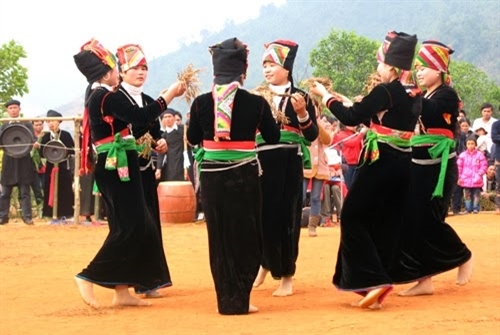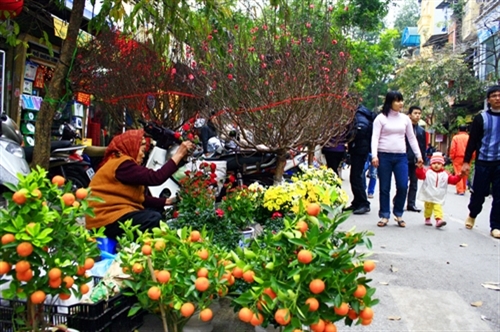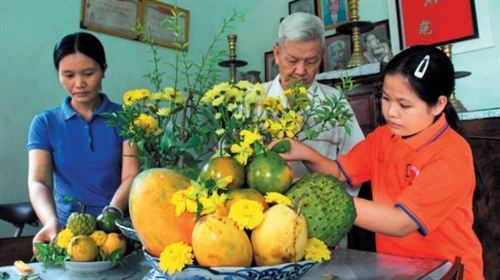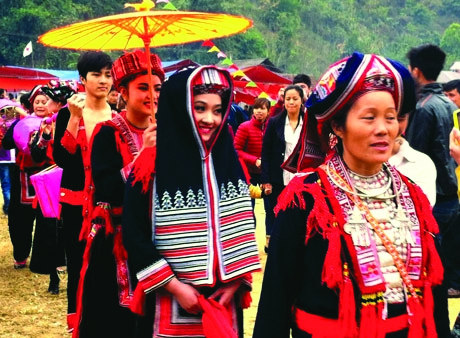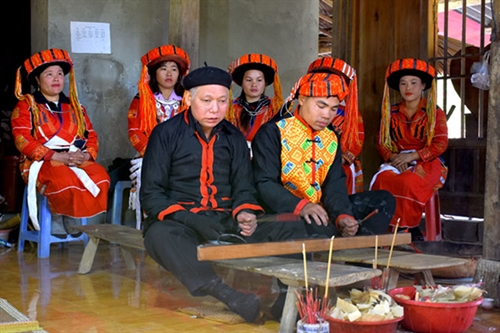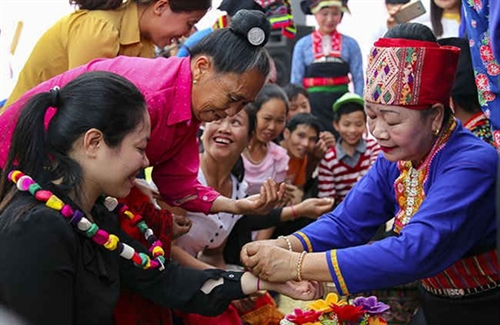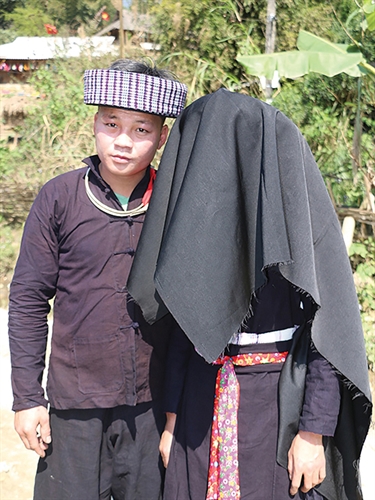Located in Phuoc Dan township, Ninh Phuoc district of Ninh Thuan province, Bau Truc, also known as Palei Hamu Craok or Danao Panrang of Cham language, is considered one of the oldest pottery villages in Southeast Asia with unique pottery craft.
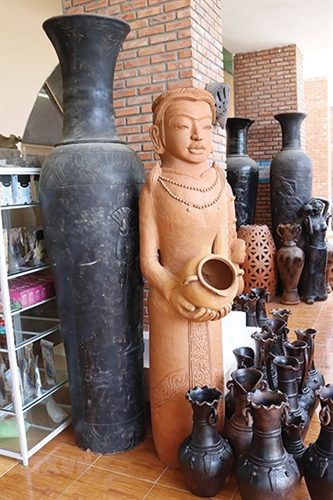 |
| Products of Bau Truc pottery village__Photo: Nguyen Thanh/VNA |
Bau Truc traditional pottery craft has existed since late 12th century and been passed on from Cham mothers to daughters as it has been a long-standing tradition in the village that all potters are women. With simple shapes, its traditional pottery products are mainly housewares and worship items. Housewares are usually large jars that can contain up to 40 liters of water, and large rice-cooking pots with handles and lids. These products usually have round bottoms, small or full blown mouths and large round bodies. Other products are small pots, portable stoves, braziers (on which cooking pots can be placed for heating), kettles, bath basins and rice containers. In their daily life, Bau Truc villagers use small jars in animal sacrifice rituals, water offering ritual to the deceased and other rituals. They also pour water from special large jars to bath the deceased. In addition to traditional housewares and worship items, the group has so far diversified their products with decorating pieces such as flower vases, statues of Cham deities such as Shiva and Nandin, Cham women and Apsara dancers as well as toys that take the shape of water buffalo, goat, snake and turtle.
For all types of products, shaping clay by hand without foot-powered wheels, no glazing and open-air firing are rudimentary pottery methods that distinguish Bau Truc pottery from products of other traditional craft villages.
Bau Truc potters’ traditional technique is a process of three steps: preparing raw materials; shaping clay, decorating and drying; and open-air firing.
Preparing raw materials
To make pottery items, Bau Truc potters take adhesive clay from their rice fields near Lu and Quao rivers. After the rice crop harvest, they drain water off their fields to dry out the soil and then dig holes 0.3-0.4m deep to collect clay. After the collection, these holes are filled and leveled and rice can be planted on the site. Clay can be collected every three months and the collection does not affect rice plantation. After the clay is collected, it is smashed into small pieces and then soaked in water in a hole for a night. Then it is mixed with sand at a 1:1 or 1:2 ratio depending on the item. The potters use their feet and hands to knead the clay to remove impurities and gravels and to achieve plasticity.
Shaping clay, decorating and drying
In this stage, a lump of thoroughly wedged clay is not put on a foot-powered wheel but a pedestal which is usually a large water container placed upside down to create the basic shape of the clay piece. The flat top of the pedestal is covered with a thin layer of sand to prevent the stickiness of the piece. Without mold, the potter builds the piece using bare hands while circling backward around the pedestal. Once satisfied with the form of the piece, the potter will use a small wet cloth to smoothen the surface and inside body of the piece to make it glossy. After rubbing the body of the piece over and over again, she rolls across the mouth of the piece to create a full-blown or cupped mouth. After that, the piece is left on the pedestal to dry a little bit more. To impress or carve patterns on pottery items, she uses a comb, a seashell or a bamboo loop. These decorative patterns are often jagged and sharp lines, waves, plants and flowers. Pottery items can be applied natural plant-based glaze for extra decoration before they are brought to shady places for a day to dry. Finally, defects on items are removed and they will be put out to dry for one week to prevent cracking before being fired. The quality and beauty of pottery products depend on Cham women’s skills, talent and artistry.
Open-air firing
The process of open-air firing has a great impact on the look and quality of finished pottery products. This open-air baking technique is unlike other pottery craft villages in the country.
Having been sundried completely, pottery items are stacked by their sizes with the largest items at the bottom and the smallest at the top. Then experienced potters will light the fire. Fuelled by thatch and firewood, the pile is burnt at 600-700 degrees Celsius. The pottery baking time depends on quantity of products and usually takes about six to eight hours. Baked this way, finished items have various colors such as reddish yellow, pinkish red, grayish black and brown. To create black spills on finished products because of smoke, Bau Truc artisans use rice husk and thatch to fuel the baking.- (VLLF)
